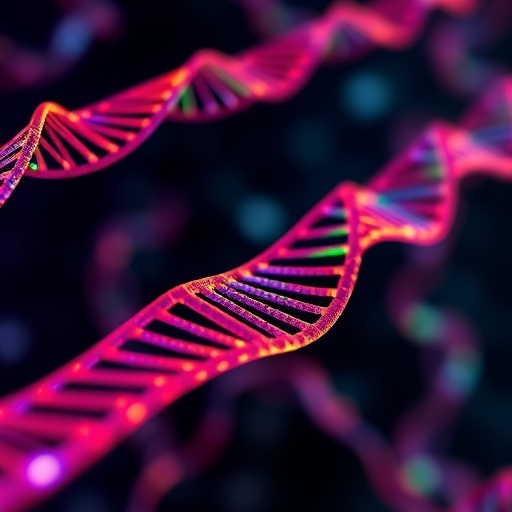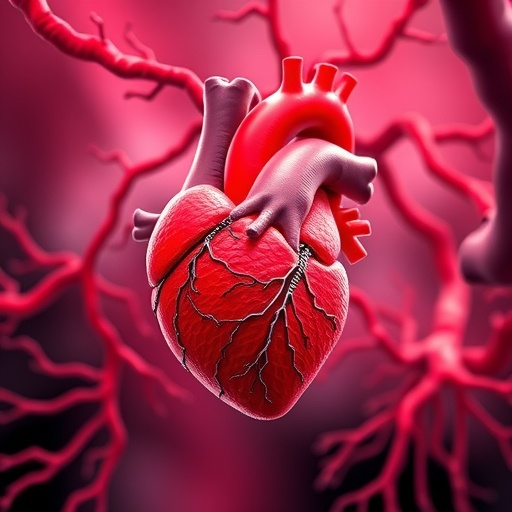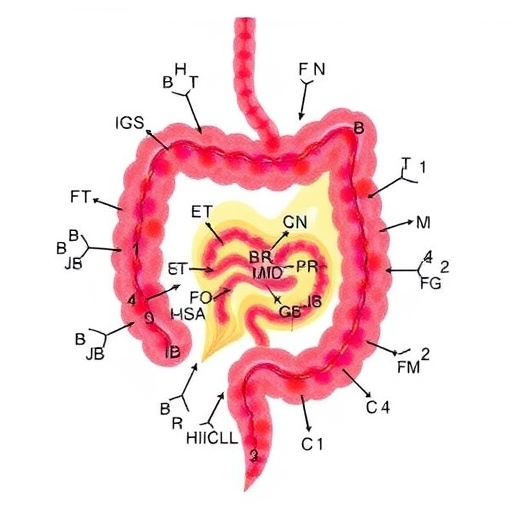PROTECT YOUR DNA WITH QUANTUM TECHNOLOGY
Orgo-Life the new way to the future Advertising by AdpathwayIn a groundbreaking development that promises to reshape the landscape of organic synthesis, research teams led by Qing-Yuan Meng at the Institute of Chemistry, Chinese Academy of Sciences, and Xiu-Long Yang from Hebei University have unveiled an innovative photocatalytic acylation method. This novel reaction exploits the cleavage of carbon-carbon double bonds in olefins via a metal-free, continuous photoredox catalytic pathway. Their work achieves a tertiary amine-mediated acylation of aromatic olefins under ambient, mild conditions, furnishing a diverse array of α-aryl ketones with superior efficiency and selectivity. This advancement marks a significant milestone in the functionalization of olefins, traditionally challenging substrates, and introduces a new avenue for precision in organic transformations.
Olefins, characterized by their reactive carbon-carbon double bonds (C=C), have long been fundamental building blocks in organic chemistry. Their unique electronic configuration, which includes both π and σ bonds, affords them versatile reactivity, enabling chemists to construct elaborate molecular architectures. Historically, methods for olefin functionalization have hinged on the cleavage and recombination of these bonds through routes such as oxidative cleavage with ozone or transition metal-catalyzed metathesis. However, these approaches often require harsh conditions or expensive catalysts and sometimes suffer from limited substrate scope or poor functional group tolerance.
The innovative photocatalytic approach designed by Meng and Yang’s groups stands apart by harnessing visible light to induce the cleavage of olefinic double bonds. Photocatalysis—leveraging light energy to drive chemical transformations—has gained momentum for enabling reactions to proceed under far gentler conditions compared to conventional thermal catalysis. Despite this, applications of photocatalysis in olefin double bond cleavage have been relatively unexplored, mostly confined to photooxidative carbonylation reactions. This new study transcends these limitations by employing a metal-free system and bulky tertiary amines that serve as N-α-radical precursors to execute the acylation reaction.
In the process developed, aromatic olefins react with acid anhydrides or acyl imidazoles under visible light irradiation to yield α-aryl ketones with remarkable functional group compatibility. This reaction pathway not only circumvents the drawbacks of traditional methods—such as dependency on precious transition metals and harsh reaction media—but also exhibits expansive substrate versatility. The use of bulky tertiary amines is particularly pivotal; these act as radical initiators enabling selective cleavage of the olefin’s π bond, followed by β-scission, facilitating subsequent acylation.
Delving into the mechanistic aspects, the researchers combined detailed experimental techniques including radical capture and deuterium labeling with computational density functional theory (DFT) calculations. These investigations elucidated the reaction sequence: initial amine alkylation of the olefin double bond creates reactive radical intermediates, which upon photo-induced excitation undergo β-scission of the C=C bond. This key step effectively breaks down the double bond into fragments poised for efficient acyl group transfer. Importantly, this avoids the generation of undesired benzylic oxidation products, delivering α-aryl ketones with high selectivity.
The mild reaction conditions employed in this method are noteworthy; they help preserve sensitive functional groups and expand the scope of potential substrates, including complex molecules relevant to pharmaceutical applications. Such broad functional group tolerance is vital for industrial and synthetic organic chemistry, where late-stage functionalization and diversification of molecules can accelerate drug discovery and development pipelines.
Moreover, this approach heralds practical advantages stemming from its metal-free nature. By eliminating the need for transition metal catalysts, it reduces the cost and environmental impact of chemical manufacturing processes. The continuous photoredox catalytic system further enhances reaction efficiency and scalability, underpinning the potential for industrial adaptation of this strategy.
The synthesis of α-aryl ketones—a class of compounds notable for their presence in bioactive molecules and pharmaceuticals—has traditionally been constrained by dependencies on transition metals and limited synthetic modularity. The strategy unveiled in this study surmounts these challenges, enabling rapid and versatile access to these valuable structures. This not only streamlines synthetic routes but also enables fine-tuning of molecular architectures to optimize biological activity.
This achievement is underpinned by a series of rigorously designed control experiments and computational validation, offering robust insights into reaction kinetics and intermediate species. Photosensitized radical intermediates play a central role, with the tertiary amine radical precursors facilitating a previously elusive bond cleavage and functionalization sequence. Such mechanistic clarity enables further refinement and extension of this synthetic strategy.
Looking forward, the implications of this work extend beyond the immediate synthesis of α-aryl ketones. The methodology paves the way for diversified olefin cleavage functionalization reactions under mild, sustainable conditions. This promises to catalyze a wave of innovation in organic synthesis, including late-stage chemical modifications of complex molecules and the development of new functional materials.
This novel photocatalytic system also exemplifies the synergy between experimental organic chemistry and theoretical computational methods. Such integrative studies are critical for deciphering complex mechanistic pathways and optimizing reaction conditions for enhanced yield and selectivity.
In sum, the pioneering work by Meng and Yang’s research groups introduces a transformative strategy for olefin functionalization that addresses long-standing challenges in the synthesis of valuable ketone frameworks. It embodies an elegant confluence of photochemistry, radical chemistry, and synthetic innovation, charting a promising course for the future of organic synthesis with wide-reaching implications for both academia and industry.
Subject of Research: Not applicable
Article Title: Deconstructive Carbon–Carbon Double Bonds for Acylation by Photocatalysis
News Publication Date: 19-Aug-2025
Web References:
https://www.chinesechemsoc.org/journal/ccschem
http://dx.doi.org/10.31635/ccschem.025.202505913
References:
Meng, Q.-Y., Yang, X.-L., et al. (2025). Deconstructive Carbon–Carbon Double Bonds for Acylation by Photocatalysis. CCS Chemistry. DOI: 10.31635/ccschem.025.202505913.
Image Credits: CCS Chemistry
Keywords
Photocatalysis
Tags: ambient mild reaction conditionsfunctionalization of olefinsinnovative organic chemistry techniquesmetal-free photoredox catalysisolefin double bond cleavageorganic synthesis advancementsphotocatalytic acylation methodprecision in organic transformationsreactive carbon-carbon double bondssustainable synthetic methodstertiary amine-mediated acylationα-aryl ketones synthesis


 10 hours ago
1
10 hours ago
1





















 English (US) ·
English (US) ·  French (CA) ·
French (CA) ·